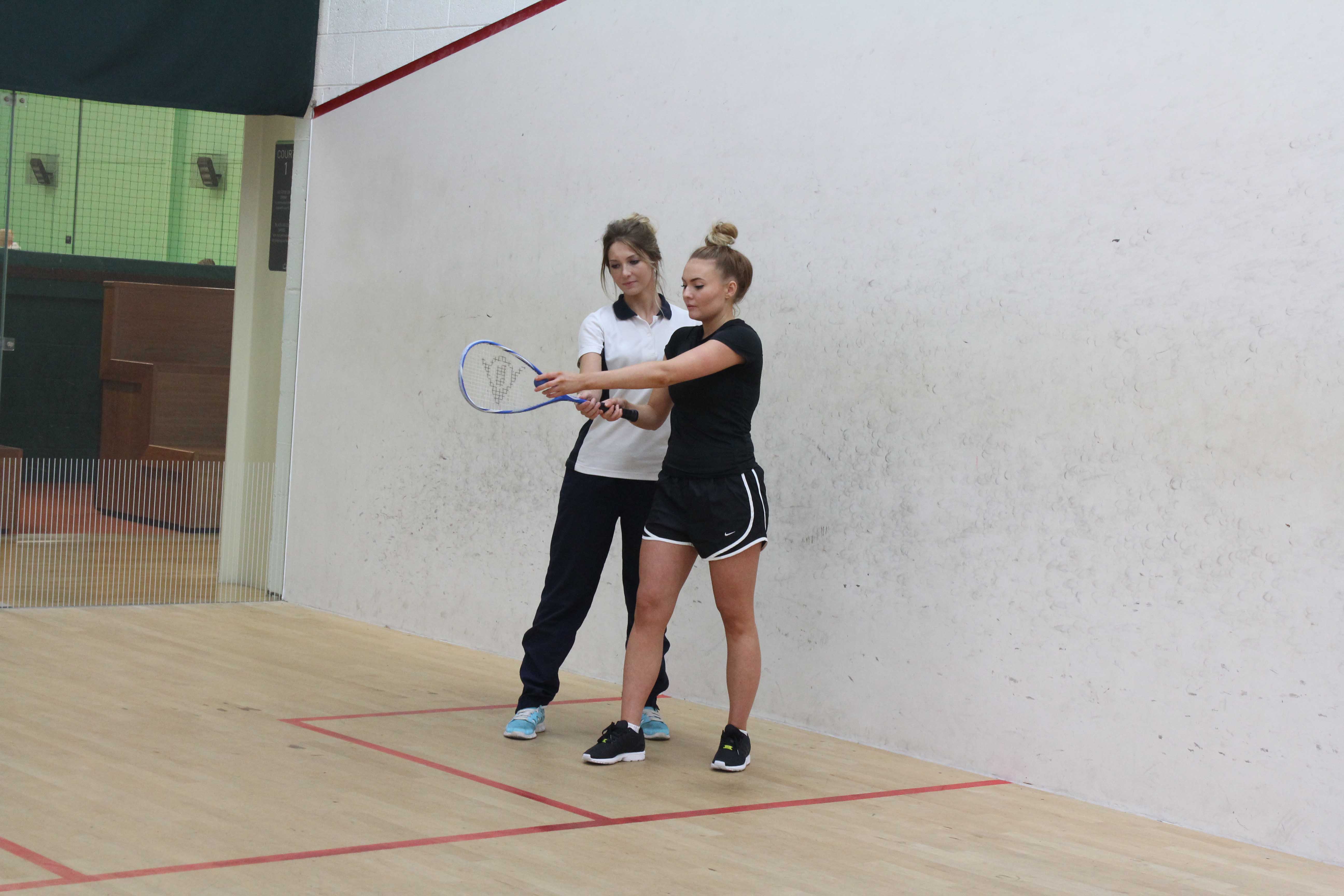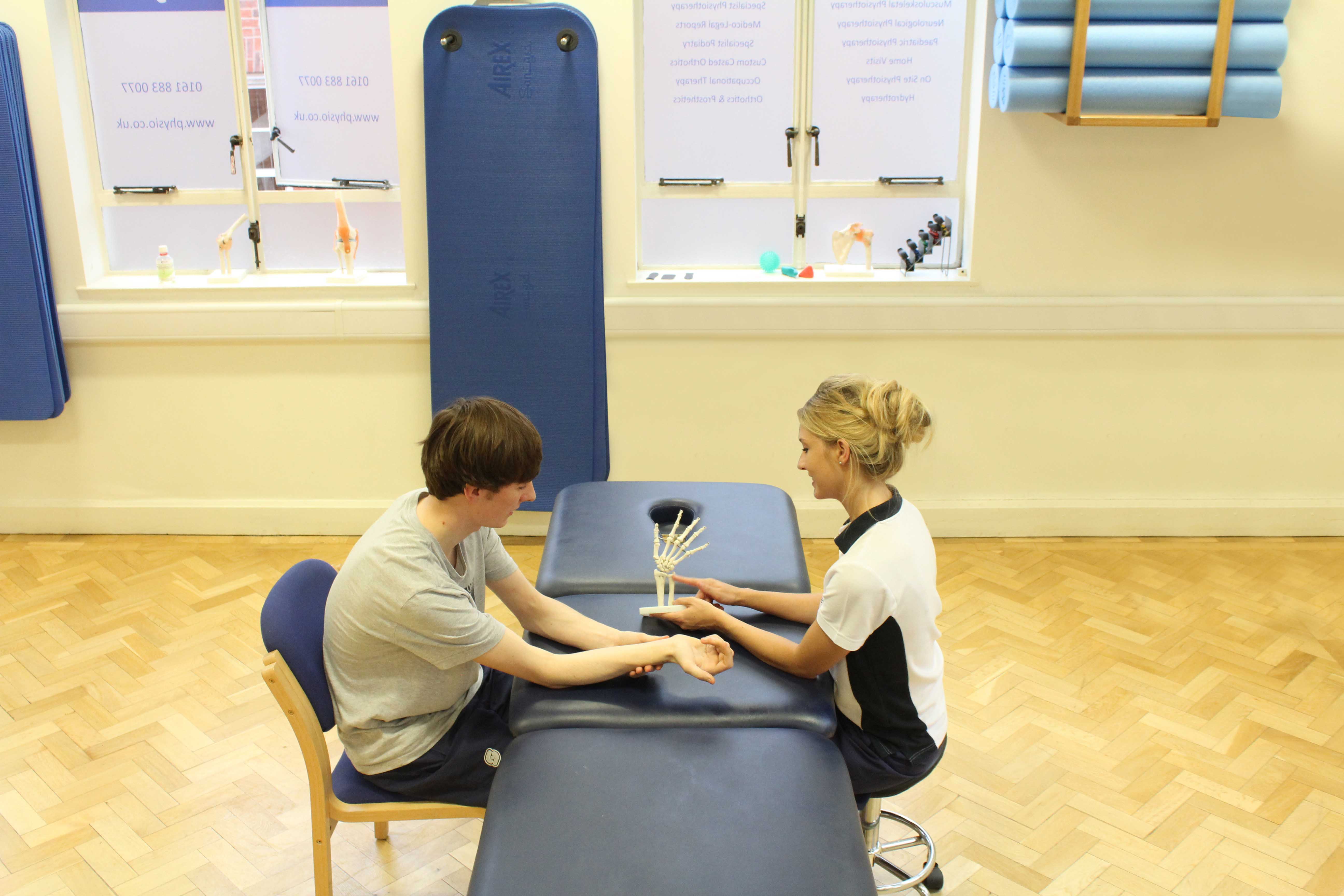What is a fracture of the hook of hamate?
The Hamate is one of the eight small Carpal bones that make up the wrist, connecting the Radius and Ulna bones of the forearm to the Metacarpal bones that make up the hand. The Hamate is a triangular wedge shape that possesses a hook like nodule that projects into the soft tissues of the palm. It is located in the heel of the palm, along the lateral boarder, below the little finger.
The Hamate can be fractured in two different ways. A type one fracture concerns damage to the nodule projecting from the Hamate, referred to as the hook. Type two fractures of the Hamate concern damage to the main body of the bone, but these are much rarer in occurrence.
What causes a fracture of the hook of hamate?
Like most bone fractures, damage to the hook of Hamate occurs due to intense forces acting on the bone. These forces can be sub divided into direct trauma, indirect trauma and repetitive micro trauma. Direct trauma would likely result from a fall onto the outstretched palm of the hand. Indirect trauma could occur whilst holding an object, like a bat or hammer that receives a high impact, then refers that force into the palm. Repetitive micro trauma could occur easily during sports activities with repeated lesser impacts from the palm striking a surface, or holding a racket receiving multiple small shocks. Over time this stress can cause micro fractures in the hook of Hamate.
Of these three types, stress fractures from repetitive strain during sports are the most common and tend to affect the weaker, non-dominant hand.
 Above: One of our therapists helping her patient return to sport by ensuring she has re-gained her range of motion during squash.
Above: One of our therapists helping her patient return to sport by ensuring she has re-gained her range of motion during squash.What are the symptoms of a fracture of the hook of hamate?
Many of the symptoms caused by a fracture to the hook of Hamate are common to most bone fractures. The can be further complications with fractures involving the Hamate due to the high number of nerves and vessels passing through the constricted space of the wrist. Symptoms that may result from a fracture to the hook of Hamate include:
- Pain or tenderness over the area of the hook of Hamate.
- Altered sensation or tingling from nerve damage.
- Numbness from nerve impingement that can spread up the fourth and fifth digits.
- Referred pain up the Ulnar or Median nerves of the forearm.
- Reduced grip strength from nerve or vessel impingement.
- Swelling in the soft tissues of the palm and wrist.
Symptoms for hook of Hamate fracture can be very subtle with little visual clues of the injury. If a bone fragment is dislodged by the fracture it can cause damage to the surrounding tissues, such as ligament injuries. Even moderate swelling within the confined space of the wrist can compress nerves leading to pain, numbness and weakened grip.
What are the symptoms of a fracture of the hook of hamate?
Many of the symptoms caused by a fracture to the hook of Hamate are common to most bone fractures. The can be further complications with fractures involving the Hamate due to the high number of nerves and vessels passing through the constricted space of the wrist. Symptoms that may result from a fracture to the hook of Hamate include:
- Pain or tenderness over the area of the hook of Hamate.
- Altered sensation or tingling from nerve damage.
- Numbness from nerve impingement that can spread up the fourth and fifth digits.
- Referred pain up the Ulnar or Median nerves of the forearm.
- Reduced grip strength from nerve or vessel impingement.
- Swelling in the soft tissues of the palm and wrist.
Symptoms for hook of Hamate fracture can be very subtle with little visual clues of the injury. If a bone fragment is dislodged by the fracture it can cause damage to the surrounding tissues, such as ligament injuries. Even moderate swelling within the confined space of the wrist can compress nerves leading to pain, numbness and weakened grip.
 Above: Our therapist educating her patient following a fracture to the wrist.
Above: Our therapist educating her patient following a fracture to the wrist.How is a fracture of the hook of hamate diagnosed?
If you are experiencing some of the above symptoms you may have a fracture to the hook of Hamate. A doctor or physiotherapist would take a subjective history to assess the method of injury and possible damage done, before confirming their findings with a thorough physical examination of the hand. An X-ray may be requested to rule out alternate injuries and confirm the severity of the damage to the hook of Hamate.
For more information on how physiotherapy can help a fracture of hook of Hamate, please email office@liverpoolphysio.co.uk or ring us on 0151 558 0077.
What would a physiotherapy assessment for Dupuytren Contracture involve?
In your first appointment at Liverpool Physio, your assessment would be divided into the following two sections:
Subjective
A discussion to find out how long your condition has been persisting, if you have had any previous injuries in this area, what symptoms you are experiencing and how your condition is affecting you and your lifestyle.
Objective
A physical assessment of your range of pain, tenderness in the area, range of movement and a series of special tests to identify exactly which structures are likely to be affected.
What would Physiotherapy treatment for a fracture of the hook of hamate involve?
Our experienced physiotherapists here at Liverpool Physio will choose the most appropriate rehabilitation approach based on the severity of injury and how it was sustained. If a cast is worn for the first 6 - 8 weeks than consideration of joint stiffness and tendon contractures will be made. The therapist???s goal will always be for the safest, quickest return to normal functional tasks. Treatments for fracture to hook of Hamate include:
- Soft tissue massage to relive pain and stiffness in the joints.
- Passive stretching to regain and maintain joint range of movement.
- Hand dexterity exercises to improve active range of movement and co-ordination.
- Progressive hand strengthening exercises to improve grip and muscle tone.
- Advice on activity modification during recovery to avoid re-injury.
- Functional activity rehabilitation for return to daily task and sports participation.
- Ultrasound to promote soft tissue healing and disperse swelling.
To achieve a quicker recovery it will be important to seek physiotherapy treatment as early as possible, once your cast has been removed. Our therapists at Liverpool Physio will tailor a treatment program to your specific needs.
For more information about physiotherapy for a fracture of the hook of hamate, or to book an appointment please email office@mliverpoolphysio.co.uk or Call 0151 558 0077.
How can I arrange a physiotherapy assessment for fracture of the hook of hamate?
If you have been experiencing any of the above symptoms, you may be suffering with a fracture of hook of Hamate. It can be very difficult to assess the severity of the fracture buy appearance alone, so it is best to get it assessed by your physiotherapist or GP.
You can contact us directly to arrange an assessment and we can advise you if further treatment is recommended, or give you details on self-management for minor cases. To arrange an appointment please email office@liverpoolphysio.co.uk or call 0151 558 0077.
Summary
Fracture of the hook of Hamate can be very painful and limit the functionality of the hand when performing normal daily tasks of engaging in sports. Should you need surgical intervention our experienced physiotherapists can help rehabilitate you, to maximise the benefits of having surgery. We will use a combination of massage, ultrasound, stretch and strengthening exercises to ensure you achieve the best possible return to normal daily activity and the sports you enjoy.
For further information about Physiotherapy for hand fractures, or to book yourself an appointment, please email office@liverpoolphysio.co.uk or ring us on 0151 558 0077.
↑ Back to top
















